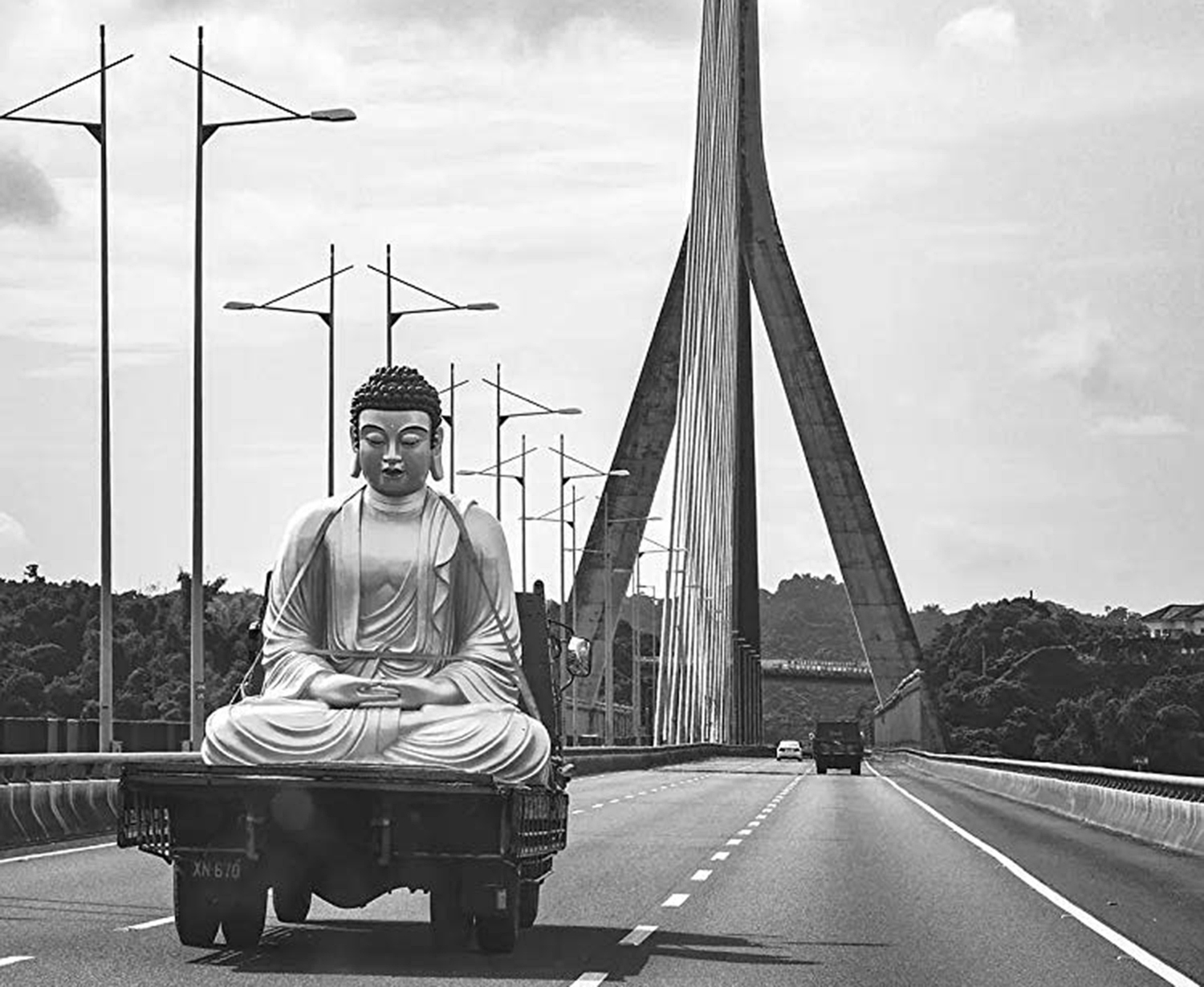
- Golden Globe Awards
The Great Buddha+ (Taiwan)
In 2014 Huang Hsin-Yao made a short film called The Great Buddha. This year he expanded it into a feature-length movie. The protagonists of this quirky and unusual work are Pickle (Cres Chuang) and Belly Button (Bamboo Chen). The former is a night security guard at a bronze statue factory, whose hobby is playing in a band at funerals. The latter is his best friend who works as a recycling collector during the day. Their boss, who owns the company that builds the enormous Buddha statues, is a middle-aged sexual deviant who loves driving thru the streets of the city in his Mercedes Benz with a bent hood ornament to pick up younger women.Pickle, meanwhile, cannot survive off his income, so he lives with his elderly mother and his biggest pleasure is the porn magazines Belly Button collects and keeps in the security room. Watching television and eating junk food take up most of their time. To say that they lead dull lives is an understatement. But one day the television breaks and their lives are forever changed. Their boss is recording his escapades through the dash cam in his car, and his bored employees start watching his videos. They become Peeping Toms. At first raunchy, the scenes soon get violent as they accidentally discover the boss’ horrible secret, while the camera pans back and forth between the voyeurs and the Buddha, which is to be sent to a religious festival. As the situation gets more chaotic, a chain reaction is triggered that involves humans talking to God and ghosts. There are dark elements beneath the fun. Class struggles and social resentment, a bleak look at life in modern-day Taiwan that international audiences can relate to as well. The Buddha resembles the old religious beliefs without being insulting to anyone’s faith.Huang Hsin-Yao uses an interesting device to show the difference in the social structure of the black and white film: the only scenes that are in color are the dash cam videos. The raunchiest parts are not seen but only heard through the audio recordings while the screen shows only darkened streets flying by. The director also uses his own voiceover to comment on the ridiculousness as a huge Buddha flies down the highway on a flatbed truck, an IV on the back of a motorcycle driven by a woman and when one character talks about a pink shirt, yet the scene is in black-and-white, so the audience would not be able to see the color of this piece of clothing.It is these symbols and technical devices that show the strength of the filmmaking. And the humor. Because although the director called The Great Buddha a drama about the class system, his film has farcical elements that cannot be denied. It is a very dark satire, an art house film that swings from the absurd to the hilarious, from the odd to the bittersweet.

